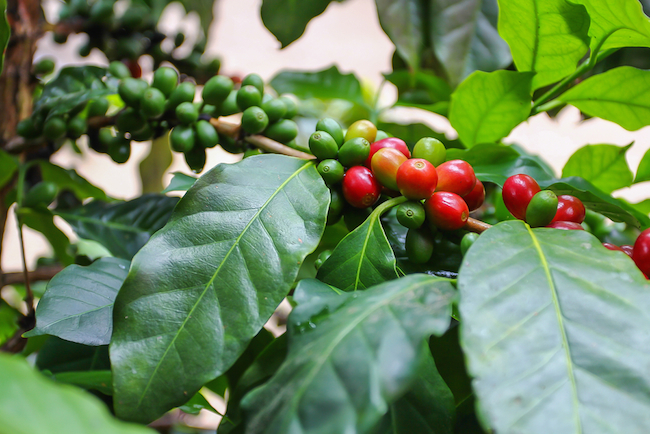Coffee Genome Reveals Why Your Java Smells So Good

Not all caffeine is created equal. Researchers recently sequenced the genome of the coffee plant and found the caffeine in your morning cup evolved independently from caffeine found in other plants.
The study based on the genome sequencing helps explain how and why the coffee plant might have started producing caffeine in the first place. It also explores coffee's other likable features, such as its eye-opening aroma and its distinctly bitter taste. And like many exercises in genome sequencing, the researchers behind the coffee study say their work could lead to better coffee varieties in the future.
"Coffee is as important to everyday early risers as it is to the global economy. Accordingly, a genome sequence could be a significant step toward improving coffee," said Philippe Lashermes, a researcher at the French Institute of Research for Development, in a statement. "By looking at the coffee genome and genes specific to coffee, we were able to draw some conclusions about what makes coffee special." [10 Surprising Facts About Coffee]
The researchers looked specifically at Coffea canephora, a species commonly known as Robusta coffee, which accounts for about 30 percent of all coffee produced worldwide, according to the study. To identify gene families specific to C. canephora, the researchers used comparative genomics software on proteins from a variety of plants that are genetically related to the species, including tomato and grape.
They found that, compared with some of its closest relatives, C. canephora possesses larger families of genes related to the production of alkaloid and flavonoid compounds — the compounds responsible for coffee's distinctive smell and characteristic bitterness. For example, the researchers found that coffee has six genes for one such compound, linoleic acid, which is partially responsible for coffee's distinct aroma after roasting. Arabidopsis, a small flowering plant that is closely genetically related to C. canephora, has only one gene for linoleic acid.
And in addition to these extra flavor- and aroma-enhancing compounds, the researchers found that C. canephora has a larger genetic assortment linked to N-methyltransferases (NMTs) — the enzymes encoded by genes involved in the production of caffeine.
The researchers compared the coffee plant's NMTs to those found in other caffeine-producing plants, including tea and cacao (the plant behind your favorite chocolate treats). They discovered that C. canephora's NMTs were more closely related to other genes within the coffee plant itself than to the genes responsible for caffeine production in tea and chocolate.
Get the world’s most fascinating discoveries delivered straight to your inbox.
"Even though the [caffeine] genes in coffee, tea and chocolate are all members of the same giant superfamily [core eudicots], the whole development of the caffeine genes in coffee is independent," said Victor Albert, professor of biological sciences at the University of Buffalo and one of the study's authors.
There isn't a total consensus on why a plant might independently evolve to produce caffeine, Albert told Live Science. However, scientists list three potential reasons why this might have happened.
"One reason is that caffeine seems to prevent herbivores from munching on the plant's leaves," Albert said. There is as much, if not more, caffeine in a coffee plant's leaves than in its berries, he added.
Other scientists believe that the caffeine in a coffee plant's leaves could be there to keep infringing plants at bay, according to Albert. When the coffee plant's caffeine-laden leaves fall to the ground, caffeine compounds sink into the soil, where they prevent the germination of other plant species that would normally compete with the coffee plant for space and resources, he said.
And the final reason that C. canephora might have started producing caffeine is one to which many people can likely relate. Caffeine is habit-forming in some pollinators, just as it is in humans. Albert pointed to a study published last year in the journal Science, which found that honeybees get a boost from caffeine found in plant nectar. This memory boost makes them more likely to remember flowers that contain this habit-forming substance and return there for nectar.
"Caffeine habituates pollinators. Probably in the same way that it habituates us. It keeps them coming back for more," Albert said.
Follow Elizabeth Palermo @techEpalermo. Follow Live Science @livescience, Facebook & Google+. Original article on Live Science.

Elizabeth is a former Live Science associate editor and current director of audience development at the Chamber of Commerce. She graduated with a bachelor of arts degree from George Washington University. Elizabeth has traveled throughout the Americas, studying political systems and indigenous cultures and teaching English to students of all ages.
